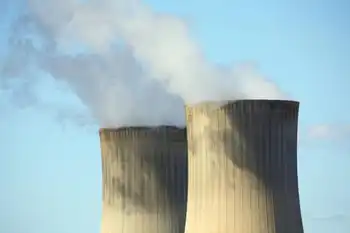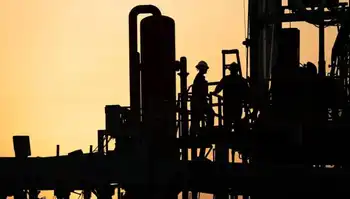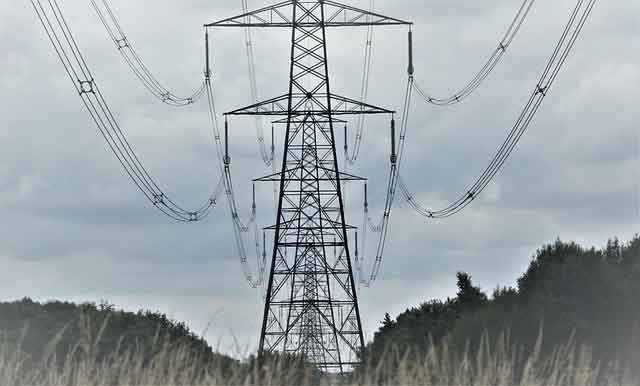Cascading Power Outage Missed Pittsburgh
Pittsburgh -- - While the cascading blackouts that rolled west from New York took out close neighbors Erie, Akron and Cleveland, they stopped short of Pittsburgh.
Southwestern Pennsylvania was spared largely because it's on a different power transmission system and its equipment knew when to shut itself off.
Duquesne Light Co., which serves about 580,000 customers in the Pittsburgh metropolitan area, reported no outages in its service area as a result of the blackout.
Allegheny Power, formerly known as West Penn Power, also reported that its 680,000 customers in the southwestern Pennsylvania were largely unaffected by outages resulting from yesterday's massive power failure.
But for a few tense hours yesterday, it wasn't clear that the region would be spared.
Pennsylvania Public Utility Commission staff, along with officials from the Pennsylvania Emergency Management Agency, huddled in PEMA's command center in Harrisburg to monitor the blackout as it spread into parts of the state.
"The fact that we [in the Pittsburgh area] still have power means local [power grid] operators have been successful in preventing [the blackout] from going further," said M. Granger Morgan, a professor in the Department of Engineering and Public Policy at Carnegie Mellon University. "They do extensive analysis of all contingencies, and they have lots of plans in place."
Electricity generation stations throughout the United States are interconnected in a system called power grids. This allows electricity generated in one state or region to be sent to users in another state or region of the country. It also allows distant power stations to provide electricity for cities and towns whose generators may have failed, be idled for repairs, or have been destroyed by some accident or sabotage.
In the U.S. electrical system, there are more than 6,000 power generating units, which use coal, and to a lesser extent, oil, natural gas, falling water and nuclear fission to produce electricity.
Power from these stations is moved around the country on almost a half-million miles of bulk transmission lines that carry high voltage charges of electricity.
Power grids cover the United States and Canada in an interlocking web. The eastern two-thirds of the United States, from the Atlantic seaboard to the Rockies, is served by a network of power grids, which are all interconnected. The only island in this sea of power grids is Texas, which is, electrically speaking, isolated from the rest of the nation.
Transmission grid operators work at large consoles that look something like Mission Control at NASA, said Allen Staggers, spokesman for Allegheny Power Co.
They can control power flow at other locations through radio-controlled switches.
"You're pushing a button in Greensburg, Pennsylvania, that throws a switch in a Maryland substation," he said.
However, most of the system is automatic and most of the time things happen too quickly for much human intervention.
"Electricity travels at the speed of light," said Staggers. "Yes there are controls that the operators can do. They can open up lines. They can isolate lines. They can isolate problems. That's what transmission grid operators do. But things can happen very quickly. They can't always take reactive steps."
It wasn't anything that Duquesne Light did that shielded the Pittsburgh area from the outages, said spokesman John Laudenslager.
"We didn't do anything here. We monitor constantly power flow that goes in and out of Duquesne Light's area. But Duquesne Light doesn't own any power stations. We didn't take any action to open and close anything," he said.
If anyone reacted, it was likely system managers in New York who took steps to keep the domino effect from getting any worse than it did. Power stations have automatic controls that shut them down when they are in danger of overload.
"As these power stations started kicking offline in New York power grid managers saw that happening," said Laudenslager. "What they do is open up ties between power grids, and that stops the domino effect."
They acted in concert with PJM, a regional transmission organization -- basically a regional grid -- that covers this part of Pennsylvania as well as New Jersey and Maryland, said Laudenslager. PJM is based in Valley Forge. Officials there said that automatic safeguards already in place and a more robust system were responsible for the fact that it withstood the cascading outages.
Duquesne Light is not officially part of PJM, though its grid is managed by PJM. It is seeking to join PJM.
"That would make us part of a bigger system, with more robust procedures, more security," said Laudenslager. "They have rules and regulations that are more protective, more conservative."
Although the blackout didn't start in the PJM area, it potentially could have crippled the transmission grid. PJM officials said yesterday at a press briefing that the principal reason this didn't happen was the protective equipment built into the transmission system to prevent overload. A minor reason -- they put it at 10 percent -- was human intervention.
The nation's power transmission system is directed by more than 100 control centers. Engineers and other experts there can monitor the distribution of power and reroute electricity from areas of low demand to areas of high demand. Often there are automatic switches where that direct the routing of power to where it is needed.
"It's what keeps the lights on all the time," said John Hanger, president of the advocacy group PennFuture and a former PUC commissioner. "But the system has a major weakness. When you have a catastrophic failure, it can spread to other parts of the grid."
In recent years, the transmission systems have moved away from their original purpose: to provide backup to local power plants and utilities in times of peak demand when they didn't have enough power to meet demand.
Now, these power grids have become wholesale markets for electricity, in which utilities and power plant owners bid on power as one would on any commodity.
Unlike other industrial states, such as California, Pennsylvania has "a surplus of electric generation capacity," noted Hanger.
"We normally have substantially more electricity than we need even on a high demand day," such as yesterday, when temperatures were sizzling and people were cranking up their air conditioners. "A major power plant could drop off and we would still have a enough power," Hanger said.
But that doesn't mean that at any given moment on a given day, the electricity used in Pennsylvania was generated here, Staggers noted. Electric utilities buy power or have contracts to buy power from distant power plants that is then transmitted to the region.
Hanger, who was a member of the PUC when the state had its last major blackout during extremely cold weather in January 1994, said he would be surprised if the blackout was from sabotage or terrorism.
He said the likely suspect was an operational failure at a substation, since the blackout occurred on a sizzling August day, when temperatures were in the 90s, and around 4 p.m., when demand for electricity is usually highest.
He said investigators need first to determine what was the cause of the outage and then why did it cascade through New York state and beyond.
"One area that needs to be looked at is what was the communications between operators on the grid? What kind of notice or warning delivery system was in place when the first outages occurred?" he said.
"There are procedures to limit the effects of a blackout on other service areas territories if you have enough notice."
The transmissions were originally built by electric utilities, once government-protected monopolies that owned the power plants that produced electricity, the lines that transmitted the power and the distribution lines that carrier electricity to individual homes and businesses.
But since the wave of deregualtion in the 1990s, many electric utilities sold off their power plants and have no financial interest in the transmission lines. Some companies have placed their transmission lines under the management of regional transmission organizations, such as the PJM.
The deregulated environment has produced some unexpected results.
"Investment in the transmission systems has been neglected, largely because people weren't sure who was going to end up owning it, so they didn't want to invest. The system has been running closer and closer to the edge," CMU's Granger said.
Related News

US looks to decommission Alaskan military reactor
WASHINGTON - The US Army Corps of Engineers has begun decommissioning Alaska’s only nuclear power plant, SM-1A, which is located at Fort Greely. The $17m plant closed in 1972 after ten years of sporadic operation. It was out of commission from 1967 to 1969 for extensive repairs. Much of has already been dismantled and sent for disposal, and the rest, which is encased in concrete, is now to be removed.
The plant was built as part of an experimental programme to determine whether nuclear facilities could be built and operated at remote sites more cheaply than diesel-fuelled plants.
"The main approach was…




